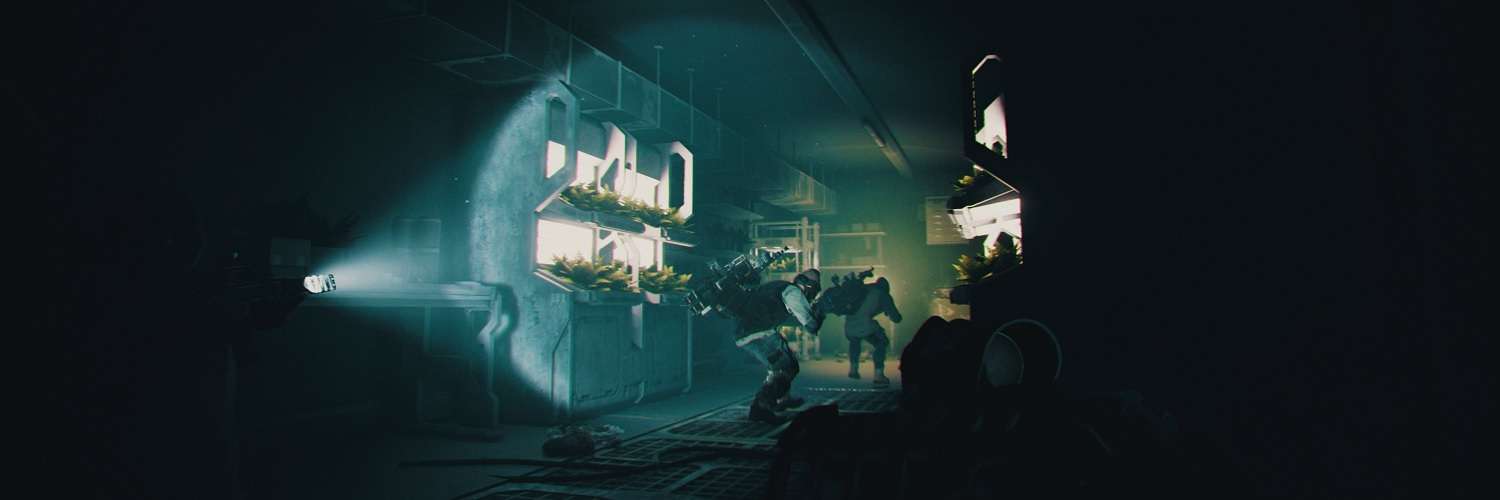
GTFO PC Review
I remember seeing the trailer for GTFO at The Game Awards back in 2017. This was a new game from the people who helped design Payday and Payday 2, two cooperative games I rather enjoyed my time with. This time, a new team, 10 Chambers, was formed with some founding members of Overkill Software to deliver a 4 player cooperative experience that would terrify us. Its marketing tagline was “Work together or die together”, something bashed around for cooperative games. There is not exactly a short supply of cooperative action games to play with a few friends or random players online. It could be the third-person action of Zombie Army 4: Dead War or the first-person shooter Back 4 Blood, whatever you fancy, there is something out there that wants you to grab some tools and fend off waves upon waves of enemies, working together to accomplish the goals.
GTFO appeared initially to be another one to join the gang. Nothing to complain about, since it looked great, but GTFO is actually going for a more serious tone. I heard about this when GTFO eventually hit Steam Early Access in December 2019, but since I rarely like playing Early Access titles I decided to skip and wait for the full release (something to keep note of later in the review). GTFO finally hit version 1.0 two years later, Dec 2021, and you know what? It has its dark, damp, dirty claws firmly stuck in me. This is one addictive game that upholds its promise of “Work together or die together”. There might be many cooperative horror shooters available, but none demand as much from its players as GTFO.
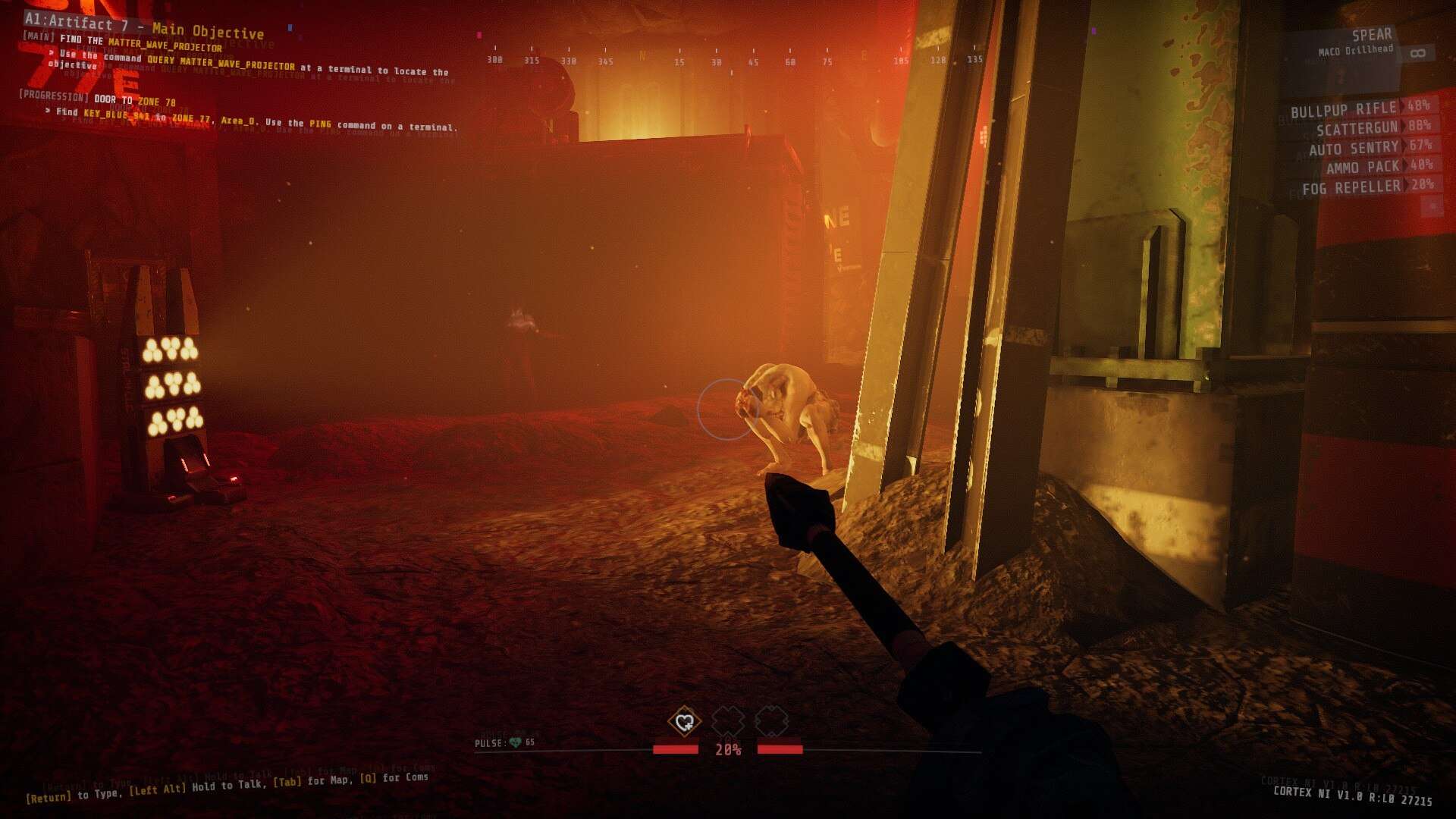
I whole heartily have to commend 10 Chambers for their seriousness to keep everything within the tone and subject matter of the game, as it cranks the immersion of its world-building from the get-go. As soon as the game boots up, players are met with a black screen, almost like a command prompt box, where computer commands are initializing hydrostasis diagnostic protocols and then eventually asking the player to “inject”, which begins the cortex interface injection with an outburst scream and some flashing imagery. The game then asks to “connect to rundown” which shows the list of missions available. All that is required is to select one of these and then the player is thrown into a lobby to wait for other players to join through matchmaking or use the newly added bots that were added in the version 1.0 update. Missions have to be beaten before the next one unlocks, making sure players are building their way up to the hardest mission of the rundown.
There is nothing to tell you about the story, no introduction cutscene, not lore building, just this mysterious sequence that makes you ask questions. The general concept is that the player is in the role of one of four prisoners that are trapped within some complex by someone that goes by the name of “The Warden”. These prisoners are woken out of stasis and sent deep into this underground complex to complete objectives for the Warden. The issue is that this complex is overrun with dangerous beasts, known as Sleepers, which will make short work of these trespassers that are now crossing over into their home space. The characters have names and history, but not much else is known about them, except through snippets of dialogue as they talk about the experience unfolding in front of them.
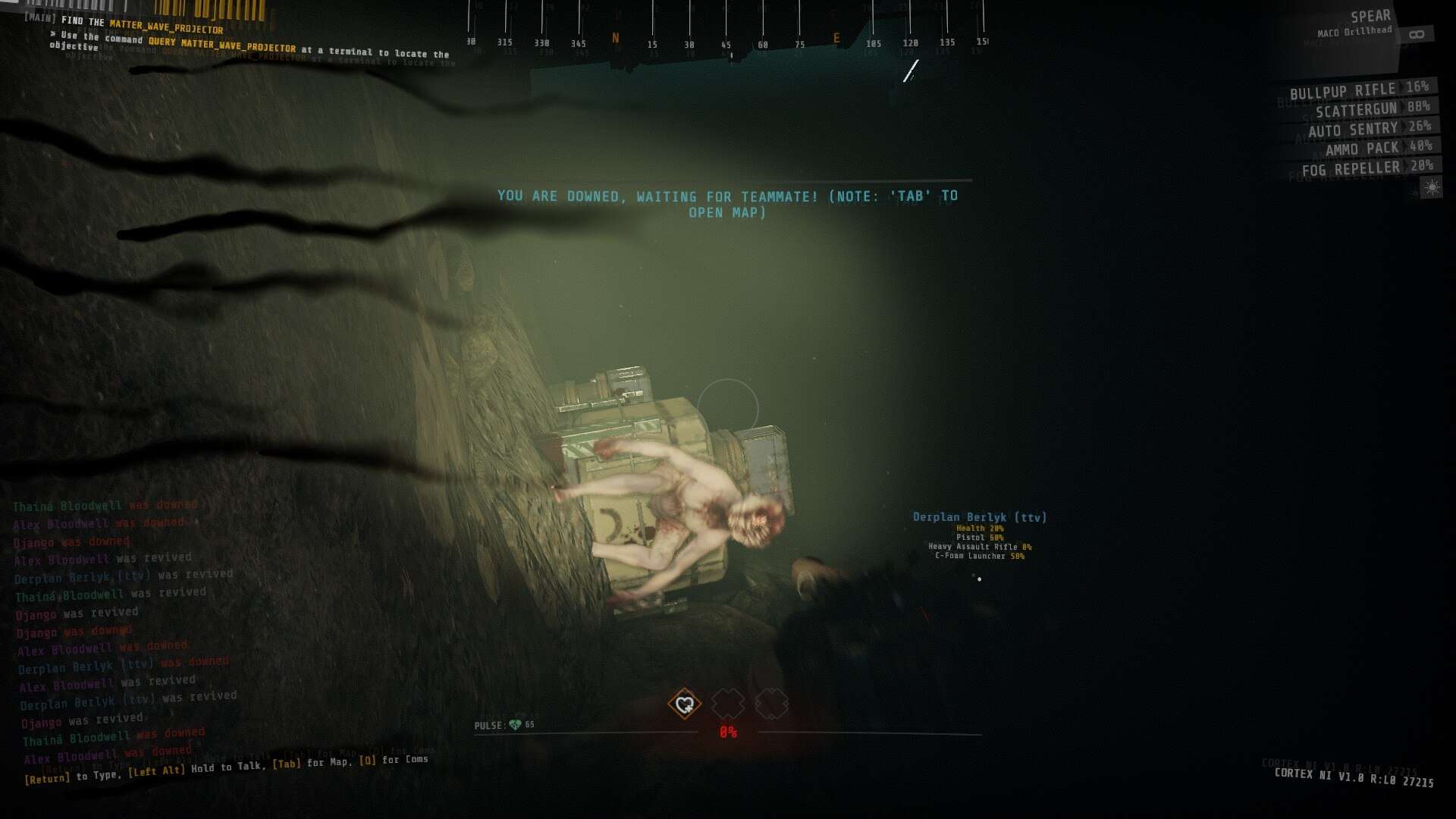
The lore is told through its environment, the interactions with logs, and audio transcripts that drip-feed information to the player as they make it through the various dangerous missions. Nothing is taken away from the prisoners’ point of view, so the player is discovering what unfolds as the characters do themselves. Since GTFO never breaks away from the immersion, its atmosphere is constantly at you and it makes for such an engrossing and somewhat exhausting experience. It is unlike any other horror cooperative shooter. There is no sign of joy or happiness here, just scarce resources and tense, life-threatening encounters with endless amounts of despair, yet is so absorbingly addictive that you want to keep going on.
Before launching down into the depths of a rundown, the lobby screen enables the players to sort out their loadouts. There are a few categories to think about, as each player can equip a main weapon, a special weapon, a melee weapon, and a tool. Weapons are the standard affair, such as pistols, SMGs, DMRs, Assault Rifles, Shotguns, Sniper Rifles, and other variations of those, while melee weapons are limited to four; sledgehammer, knife, bat, or spear. Tools are handy to support the team in various means. It could be using the three sentry types for added firepower to the team in defending situations or using the C-Foam launcher to block doors or slow down enemy routes. Lastly, there are three different booster types, Muted, Bold, and Aggressive, which give the player slightly boosted stats for a single mission. These are in limited quantity and are gained by finding more during a mission, adding any discovered boosters to your inventory.

It is refreshing to see that GTFO gives you all the gear options from the start. There is no experience or progression system that leads to unlocking new weapons or items. The only unlockable things are cosmetics that are rewarded for finishing levels to add customisation to the prisoner. Some people might have become addicted to having flashing experience bars fill up and enjoying the rewards or working towards a season pass, but I feel that has become the norm so much and is an unnecessary way of unlocking things in video games, so it makes a change to see the design of GTFO go for something more classic and old school. It is down to the players to decide what gear they need to take, which might change once they return from a level defeated, using that experience to adjust their gear for the next attempt.
GTFO has no traditional tutorial level. I was quite surprised the developers had the balls to do this because games can often spoon-feed everything in a tutorial. I understand why, because there are so many people playing games with different skill levels that the developers are worried, so a few games have lost that sense of self-learning. Instead, the ‘tutorial’, in essence, is the first mission, A1, but it plays like any other mission. It removes any of the hand-holding, such as pressing the mouse to shoot or space to jump seen in other titles. What GTFO does in its first mission is that it gives hints within the mission objectives to help the player understand how the game works. Need to open a door? The first mission will tell you to use a terminal to run commands on how to scan for the required key and find out where it is, but not through pop-up boxes on the screen, but through the standard objective display that is always there on the top left of the screen, making it feel part of the standard game design.
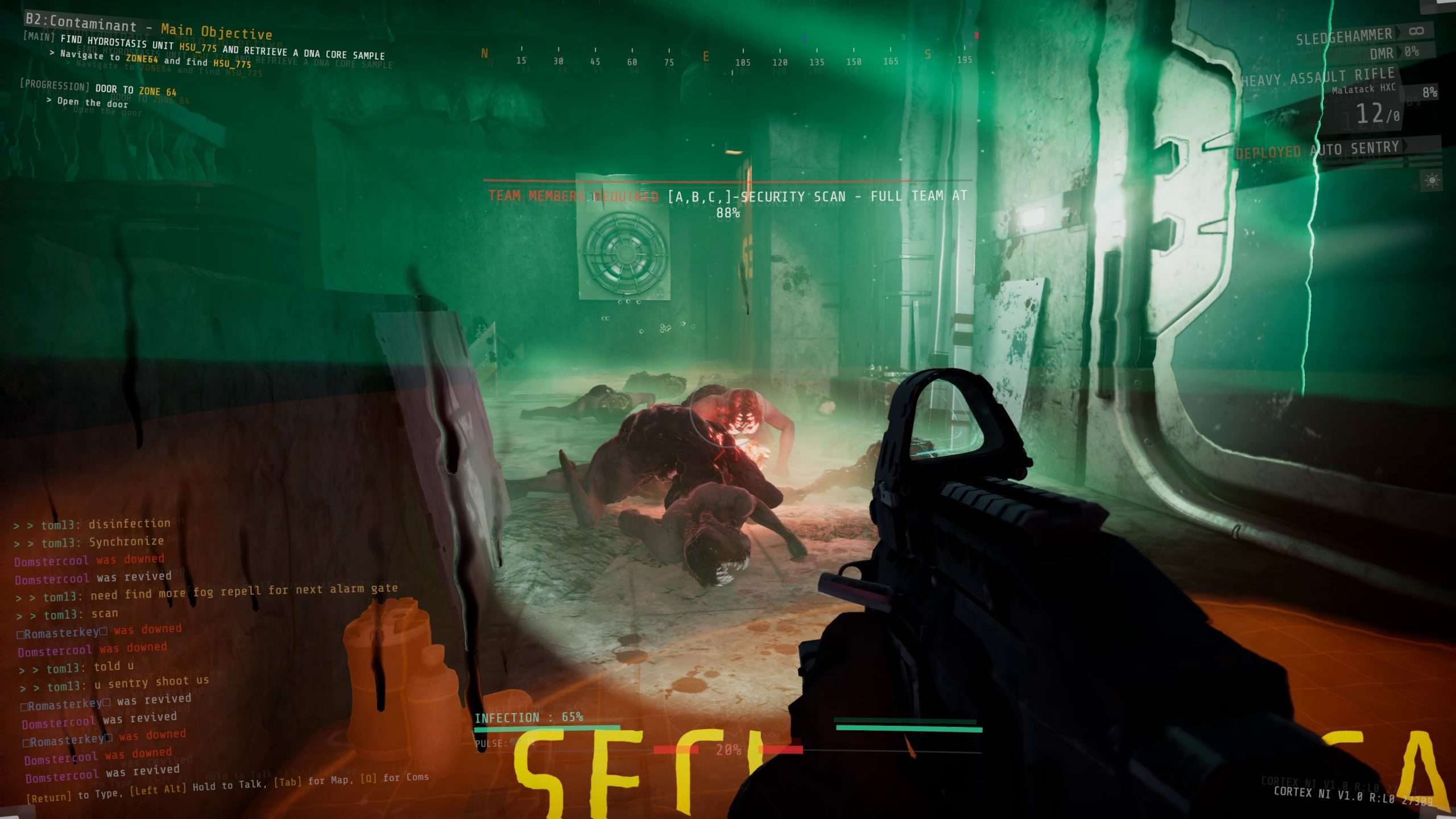
This way of teaching allows players to explore and learn on the job, understanding the mechanics from experience rather than being told. It makes for an engrossing educational time, and sure, sometimes things are missed that I did not learn about until three hours later, but I did eventually learn from participating in missions or being offered help from other players. The people at 10 Chambers even said they designed it purposely this way because it was about “anchoring the players into the experience” and they understand that this “approach will not be for everyone”. People will die, and from that death, they should adapt and understand why they failed and then correct that. It might seem an awkward thing for a game to do, but it makes it so rewarding. I am sure some people will not have time for this type of experience and just want a game to relax, something to not tax the brain, but GTFO is not that, it wants the player to be always engaged, always alert, and ready to test their survival skills and successfully get the fuck out.
Thrown into an unknown environment, players are given tasks to find items, extract items, activate something, or survive. There is nothing special in the objectives themselves, but it is how the game goes about doing them that makes it riveting. You can try randomly exploring to find these objectives, which is possible, but the levels are designed in such a way with security doors and many branching rooms that the best way is to use the mentioned terminals and type in the commands to help to find what it is the team is looking for. The security doors state what room they are and what other rooms they open passage to, giving a sense of direction. There is a map that reveals itself as the players explore, offering another way to see which parts have not been explored.
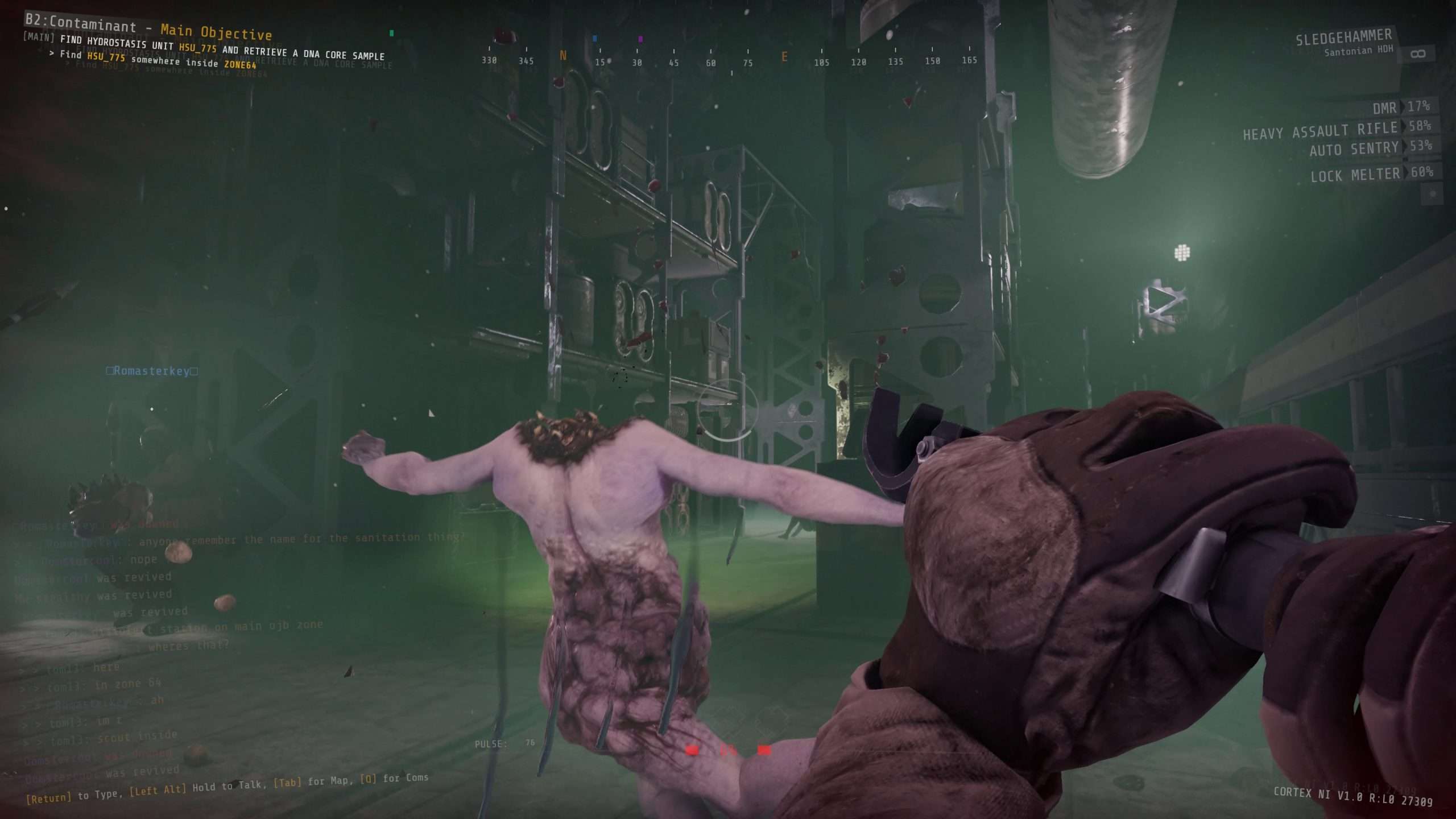
GTFO relishes making the player feel uncomfortable. The environment seems cosy and barren, but exploring reveals the dark and foggy sections that reduce visibility to near zero, even causing infection if the fog is poisonous. Within these zones, you can hear the noise of the monsters, an eerie clicking sound that would not be out of place in a 90s Japanese horror film. Sleepers come in a few types. There is the standard Striker that goes for melee damage and a shooter variation exists that shoots out these lights that track humans. Both of these also come in larger variants that take quite the punishment before falling. Lastly, there is one Sleeper that while sleeping releases tentacles that move around acting as a sensor. A shot in the head stops this, but if touched, a loud scream emits, and anything close by comes rushing in. There are a couple of unique monsters that I won’t spoil, as discovering some of these horrors adds to the despair.
These currently sleeping monsters are awoken by sound or light, so the game is spent mostly keeping quiet and using melee weapons as supposed to guns blazing that typical zombie shooters are more attuned to. Those tools selected at the beginning of the mission, or items found during it, will help survivability. Glow sticks help light up areas and do not wake up the Sleepers, there are devices that can remove the fog to make the visibility better, and there is a motion tracker that helps with tagging enemies. Communication can be key in a room of Sleepers in keeping them dormant, as smashing the skull in might wake the one close to them, so cooperating a synchronized whack-a-mole session with teammates works wonders in keeping these critters from causing issues.

Rarely should guns be used, as once the trigger is pulled, whole rooms of sleepers will awake and begin to run towards the source of the sound. At that point, guns blazing is the best chance of survival until they are all dead, then stealth can resume. It only takes a few hits before the player is downed, but as long as someone is alive then that downed person can be resurrected with 20hp (100 is the standard). The mission only ends when everyone is down, upholding the “work together or die together” tagine. This is a game where one person can not be a lone wolf and go off on their own for too long. Cooperative is key to beating everything GTFO offers.
There are points within missions where gunplay is advised, which I will admit is nice to do, because the guns feel good to fire. They are weighty and sound brutal with their impactful audio effects. These action scenes are during the security door sections. While the door is unlocking, done by standing on the security panels on the floor, it makes loud noises that alerts enemies. Players have to band together and stand on these panels that keep moving, all while defending themselves from the onslaught. It is easy to run out of ammo, since the mindset is to survive and pump all these monsters with bullets. When ammo is dry the only way to gain more is finding ammo pouches within the mission. Keeping an eye on each person’s health, ammo and tools can be done by pressing the tab key or pointing your camera view at the character. This adds to the tactics, communication, and even roles, which play a hand in staying alive.

This engagement adds to the overall atmosphere. GTFO never steps out of this hell hole. It’s a game that is fully committed to delivering a tense time; it is an oppressive attack on the sensors that adds to the pressure of survival. Its fantastic audio design, the brilliant use of light, great visual tricks, and challenging gameplay come together to offer something different. The genre might not be unique, but the delivery makes GTFO stick out in a cramped market.
It’s not all great as some elements of GTFO still need work. The matchmaking has issues that cause the party to vanish. I was hosting a lobby with a friend, and a few attempts of matchmaking would cause my friend to drop and the matchmaking to stop. In some instances it caused them to leave my lobby and join another lobby with two players, but leave me in my now empty lobby. The worst one though is when having a lobby full of four, the mission begins, but as soon as it starts a player drops. There were a few times when I was stuck with a mission with two other players, instead of three, and with the difficulty not scaling to the player count, it can be a bummer; once our team of three did manage to beat a mission, which felt so satisfying. Another bug removes most of the audio bar a few ambient sounds. This happens every so many hours. The bugs are frustrating but hopefully solved soon. The bots added to the 1.0 release are okay. It helps fill out a team when missing a player or two. What I found is that bots try to mimic your movement, but if they find themselves in a situation they will often fire, which is not ideal, as then it alerts the enemies and all hell breaks loose. Nice to be included, but not close to replacing a human player.

The last thing I want to talk about is rundowns. At the start of this review, I mentioned Early Access. Well, it is to do with rundowns and the idea that the developers have about it. Currently, 1.0 is rundown 6 – previous releases under Early Access had lower rundown numbers. I believe there were 9 previous rundowns, each with a distinct name to represent its topic in the story. Each rundown includes a set of different missions unfolding bits of the continuous story that overlaps between the rundowns. This means players who arrive, like me, when the game left Early Access, have actually missed quite a big chunk of missions so far and cannot play these, as they are gone forever. The developers have stated that this continues to be the plan, meaning a new rundown will arrive, presumable rundown 7, and the current missions will vanish and a whole new set will appear with new story content. This is a great idea to keep the game fresh, and since it does not cost anything for this to happen, I am all in for having an update, say every few months, that gives more story and different missions, but I do wonder about this process when it comes to the end. Potentially there could be many missions people miss out on when they purchase the game, say in a sale, a year or two later. When the updates stop will the rundowns recycle over a period or will they all be accessible at once to allow everyone to play them again? Because if not, that makes me feel sour on the whole thing. This is about potentially losing out on so much for being a late buyer and that does not quite sit right with me.
GTFO is a developer taking those arcade first-person, horror shooters and making a game for the people who enjoy a challenge, such as the Dark Souls series, but forming a cooperative experience that genuinely sticks to the idea of horror. The gameplay upholds the idea of being outnumbered and fighting for true survival, rather than going gun blazing in a field full of zombies. This game is not for everyone. It is for a specific set of people looking for a stimulating cooperative title that relies so much on patience and testing how well people can work together. It is hard, it will make players suffer and those players will have to learn and adapt otherwise the same team wipes will be repeated. GTFO oozes amazing atmosphere and tense gameplay, it is well designed with a philosophy taken from old game design about learning while playing to let players discover how to overcome the game’s challenging missions. This game delivers on making players feel isolated, stuck in claustrophobic environments surrounded by the deadly sounds of monsters awaiting their next snack. GTFO stands out as a unique cooperative horror experience due to its gameplay design, one that I am fully relishing, even after countless deaths and failed runs.
